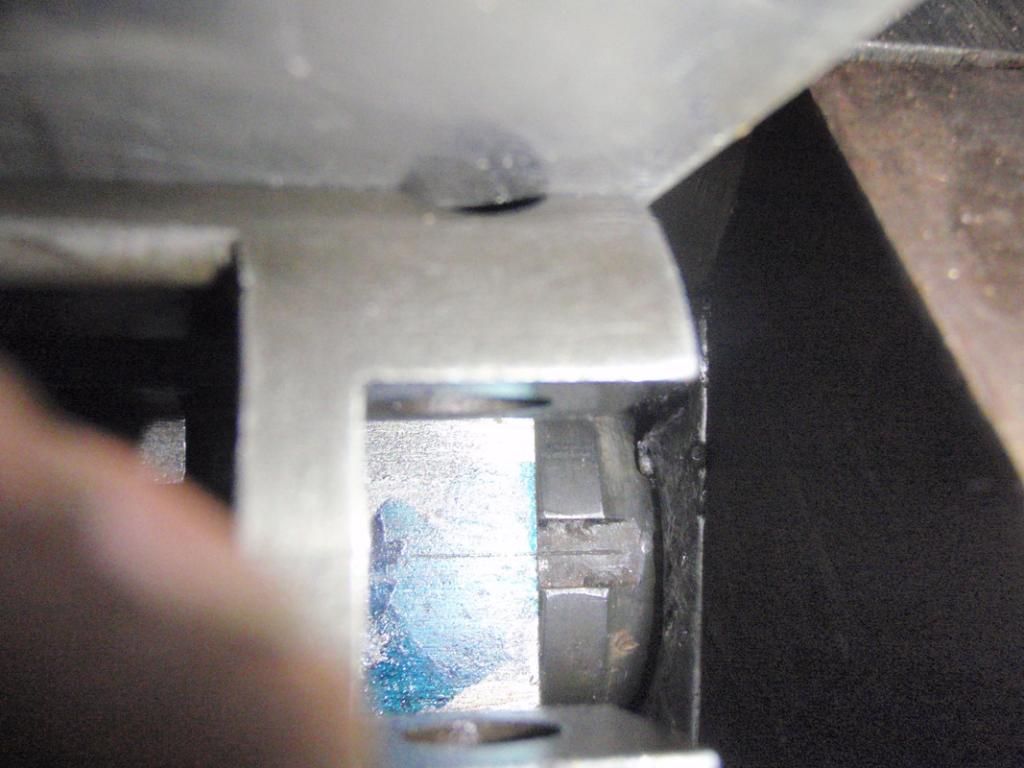-
Legacy Member

Removing barrel, Excalibur?
I'm attempting to remove a cut barrel from a Metford II action and I'm not having much luck. I have a proper custom action wrench and I visited a gunsmith with a hydraulic press barrel vise. I prepared with a Kroil soak and was stored in an unheated garage to mimic the freezer method. Unfortunately we are having a warm up and the action was approximately 10c/50f by the time we were ready. We successfully pulled a barrel without any of this prep work from an RTI Lee Speed with the equipment. Heat was applied to the receiver ring before wrenching. We were not able to get it to budge, and the barrel would spin in the press before the action turned. I would like to preserve the barrel because I know a martini builder who wants to buy the 18" stub. I will cut relief cuts and flats for wrench grasping if I need to, but was planning on selling the take off to recover some costs.
As an alternative, I was inspired by the tale of the sword in the stone, and was wondering if it was plausible to set the barrel in concrete to make a vice that grabs almost 100% of the outside surface, forms around the rear sight base and the chamber knox. The barrel could be wrapped in tape for protection, muzzle plugged, and upon removing the action, the concrete hammered away.
If it's tight to the point that I need to cut the barrel or cast a vice, how likely is the receiver to crack or otherwise be rendered unusable by removing the barrel, and what would someone who knows what they are doing do?
-
-
03-03-2024 12:37 PM
# ADS
Friends and Sponsors

-
Legacy Member

I figure saving the barrel would be futile. I'll probably go with the relief cut 10-20 thou from the ring.
-
-
-
Advisory Panel


I have a proper Enfield barrel vice from the RSAF. I've seen a few nice barrels wrecked from clamping on the thin part of the barrel instead of the Knox Form. I have a beautiful Savage two groove No.4 barrel here that is literally squeezed to a smaller diameter. The .301 run gauge stops cold on it in the barrel. I struggled with Brownells tools for years. If you want me to have a go at it before you destroy it, give me a shout.
-
-
Legacy Member

Probably my best bet at this point. You have a great reputation. I'm sending the RTI barrel out to McGowen get copied and eventually once that returns, is it alright if I contact you for rebarreling and sight installation with the new barrel?
-
-
Advisory Panel


-
-
Contributing Member


What kind of barrel vice blocks or bushings are you using? I would recommend steel (not wood nor aluminum nor brass). I have a vise from brownells, and have removed even mosin 91/30 barrels with it. These would spin in the wheeler vise with wood blocks as well as spin in the brownells vise with the aluminum bushings, but it held with steel bushings. Factory Remington 700 barrels can be similar. I use the wood blocks for delicate things, like shotgun barrels. I don't use aluminum bushings anymore. Lead shims is the way to go if you need to protect the finish when removing. Lead cleans up much easier off of, a parkerized barrel than aluminum does.
-
-
Legacy Member

Custom hydraulic press vice. We used aluminum bushings, the vice itself is roughly 3 inches wide. It worked excellently for pulling the barrel from a similar model and age rifle in average RTI condition. This Metford is in much nicer condition, little to no rust. He claimed this Metford is the first rifle he had spin in the vice like this.
-
-
Legacy Member

+1 for the lead lined barrel vise. I made one to install the barrel on my 1918 BAR. It took quite a bit of torque to index, but didn't spin or mark the parkerizing.

-
-
Contributing Member


If you don't need to preserve the barrel there is the old school method of heating the barrel with an oxyacetylene torch until you can bend it 90 degrees. Let it cool and put a pipe on it. If it doesn't move get a longer pipe, it'll move.
-
-
Advisory Panel


Pulled one recently that defeated a six foot pipe on the wrench. Had to cut the receiver which was a boltless orphan so didn't feel too bad. Threads were full of old oil too. Would be interesting to know what kit was used to wind them on at the factories.
“There are invisible rulers who control the destinies of millions. It is not generally realized to what extent the words and actions of our most influential public men are dictated by shrewd persons operating behind the scenes.”
Edward Bernays, 1928
Much changes, much remains the same. 
-
Thank You to Surpmil For This Useful Post:














 PM
PM











